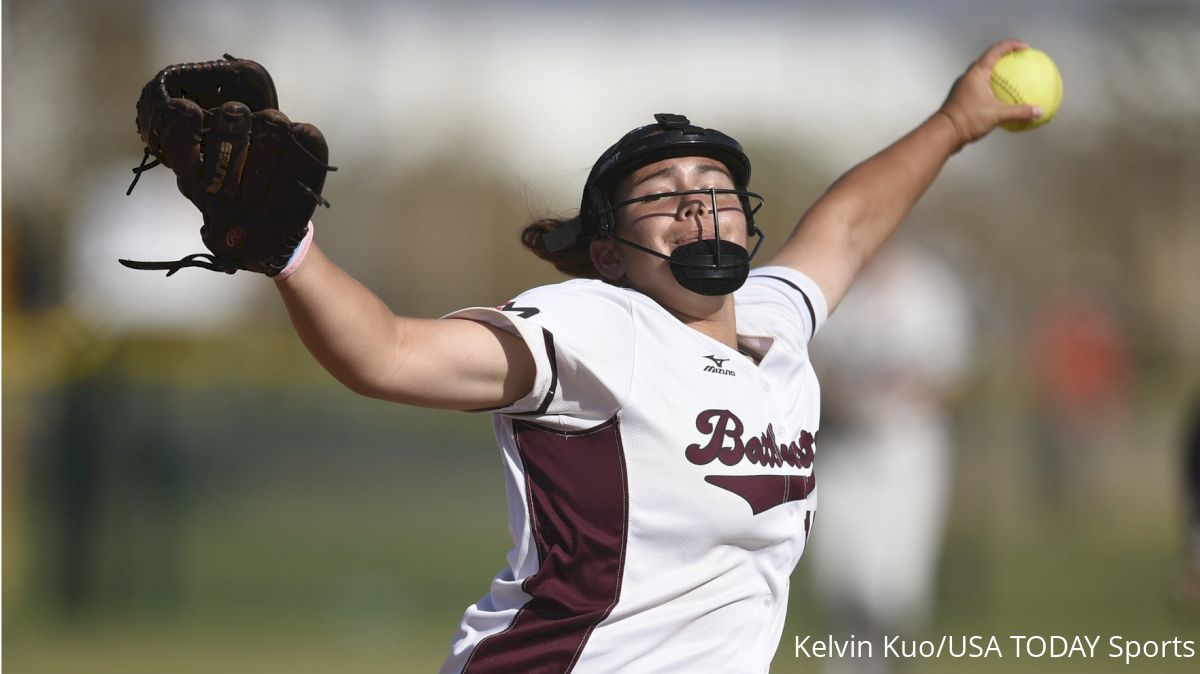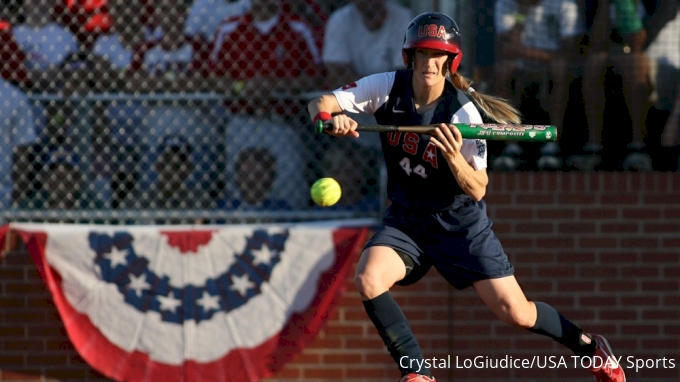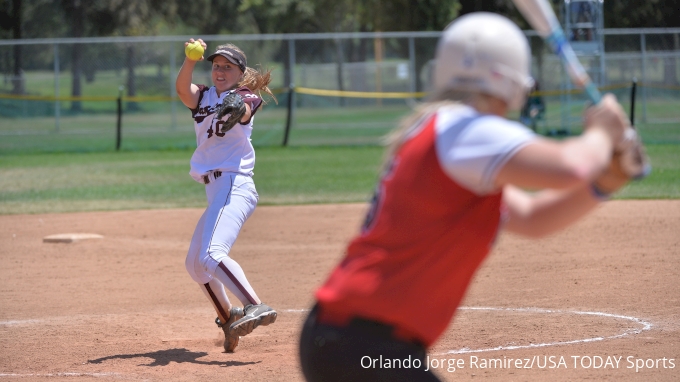Dear Pitchers: Why So Many Pitches? Love, Gary
Dear Pitchers: Why So Many Pitches? Love, Gary
Legendary Batbusters coach Gary Haning offers his advice to the next generation of pitchers.

At the recent NFCA Convention in Las Vegas, legendary club coach Gary Haning was inducted into the organization’s Hall of Fame along with three other key influences in the sport.
Haning was the first travel ball coach ever inducted into the NFCA Hall of Fame. Haning built the Batbusters into one of the most revered and successful travel ball organizations in the nation. During his coaching career, the OC Batbusters won over 30 national championships.
The list of All-Americans and Olympians he’s coached ranges from Laura Berg to Jennie Finch to Andrea Duran. Elevating the level of competition and expertise at the club level, Haning left an indelible imprint on the softball landscape.
Over three decades as a fastpitch coach, Haning witnessed the evolution of pitching and offers his wisdom for future pitchers.

I have been lucky to know many great pitchers who were the hardest workers on the team and are responsible for much of the success our teams had on the field and how we were perceived off the field.
I believe softball/baseball pitching to be the hardest position one can play in a team sport. That being said, it is in my opinion — and in the opinion of many long-time coaches — a real dearth of quality pitching in Southern California.
I do not mean to insult and, to be sure, there a number of very talented, successful pitchers but the numbers are far fewer than, say, 10 and certainly 15 years ago. There are a number of reasons this has come about and I believe it could be changed.
1. Too Many Pitches
In my opinion, there is far too much emphasis on throwing a variety of pitches in the younger age groups. Time and time again, I hear a young pitcher — sometimes as young as 12 years old — state that she can throw five or six pitches.
I have been blessed to see, coach, or coach against some of the best pitchers in the world and none of them had, or has, complete command of more than four pitches.
Only one or two had complete command of four pitches, and only a small handful had complete command of three pitches.
If a pitcher practices around four times a week at 100 pitches at a time and she is practicing four pitches, it is only reasonable to say none of those pitches is getting enough practice, along with the fact that people tend to practice what they do well more than what they don’t do well!
2. Un-emphasis On The Fastball
The notion that a fastball is not used in fastpitch softball is just nuts. A well-located fastball not only can get hitters out, it is also extremely effective in setting up other pitches.
Lisa Dodd won back-to-back 18U Gold National Championships at a time when the Gold Nationals was the top youth tournament in the U.S. and almost assuredly the world. Lisa threw a 60 mph fastball, a 54 mph drop, and a 44 mph changeup.
She gave up one unearned run in winning nine games in the two nationals. She threw a perfect game followed by a one-hitter on a bunt single in the final games the first year, and threw shutouts the final games the second year.
Her greatest talent was simply that she never missed a pitch. You literally could have caught for her with a blindfold on and every pitch would have hit your glove.
3. Location, Location, Location
Location, movement, and deception are the most important factors in being a great pitcher, because even if you throw 75 mph and throw the ball in the middle of the plate, waist high, the pitch will get hit.
If you cannot throw a pitch and hit a spot very nearly every time you try, how are you then going to throw a different pitch that is a variation of the first pitch, requiring subtle changes to your mechanics and get the second pitch where you want it to go?

Before worrying too much about making the ball move, it would be good to make sure you can throw it where you want to throw it!
Learn to throw strikes, where you want them, when you want them. Once you have mastered that it is a pretty easy addition to hold the ball a little off-center, turn your wrist a little in either direction and put some movement on the ball in a manner you can command.
4. The Most Devastating Pitch Is . . .
The most effective and devastating pitch in softball is the flip changeup. It is also probably the hardest to truly command, as the release is completely backward and opposite of everything else you throw.
It can be mastered, though, as many pitchers have shown, but too often ego and perception get in the way. Who wants to be known as a “changeup pitcher” at 12 or 13 years old? Unfortunately, not many — and therefore it is not given the immense amount of practice time it needs to be thrown consistently.
A pitcher can be very effective with only two pitches if she has complete command of them both and a good plan as to how to use them. In my opinion, the next pitch to master would be a drop; be it a peel or turnover type drop, it is easier to stay out of trouble with something down in the strike zone and if one learns a peel drop it is pretty easy to make it run in either direction.
5. The Good & Bad Of The Riseball
Everybody loves the riseball, and granted if you can truly make the ball jump it is a very tough pitch to hit or to identify when not to swing. It is, however, a very dangerous pitch when not thrown well and, again, in my opinion, it is the hardest pitch for female pitchers who have smaller hands and less upper body and hand strength to throw consistently.
If one is exceptional and can truly generate the spin with the release angle needed to make the ball rise, it is very effective. In my experience, one pitcher in 10 or maybe one in 15 can make the ball jump. If you throw hard enough, the pitch can be effective as a high fastball or often you can get a high screwball out of it.
I should be clear in that I would never say don’t attempt to throw a rise, and if you are blessed with the physical attributes the pitch requires and you work enough to locate it; especially if you are one of the very few who can throw it knee-high and still have it come up, you will undoubtedly get many strikeouts.
6. The Exception To The Curve
As a young baseball pitcher, I had a very good sidearm curve. I fell in love with the pitch and at one time thought it nearly unhittable. As I grew older and competition got better, I was very surprised when the pitch got crushed a good percentage of the time. I eventually learned what all pitchers discover: flat breaking pitches are big trouble if not perfectly located.
Underhand curve balls are easy to throw but have a greater tendency to stay flat than overhand curveballs. I believe it is also easier to "hang" a softball curve than it is a baseball curve thrown overhand or three-quarters.
If a curve is to be a useful part of a pitcher’s repertoire, she must be able to locate perfectly more than any other pitch. A curve thrown at a hitter’s knee that snaps and clips the inside corner is a good pitch. One that starts on the inside corner and breaks over the heart of the plate may get by a time or two because it fools a hitter, but more likely it will get you a seat on the bench next to an angry coach.
The same applies to the curve that looks like a strike and moves away from a hitter; this can be effective for the hitter to chase but if it doesn’t move enough and stays on a flat plane, you are likely to watch your outfield sprinting toward the fences or worse.
7. The Effective Screwball
Screwballs are now very popular and if thrown well it can be a very tough pitch to hit, especially to hit into fair territory. A riseball-screwball hybrid is also a good pitch, and if you can make it move up and in as well as up and away that is tough for any hitter to handle. Screwballs that break in the direction of you throwing hand and down are a good and fairly easy variation.
The biggest point of this “one man’s opinion” is simple: learn to do something well before you try to do too much. Master two pitches before you spend too much time on a third.
There are flame-throwing, riseball-wielding, totally dominating pitchers in the record books. There are also crafty, change-of-speed, change-of-location pitchers who confuse and frustrate hitters to distraction.
If you are one of the former, think how devastating you will be if you also use some of the skills of the latter!
Written by Gary Haning